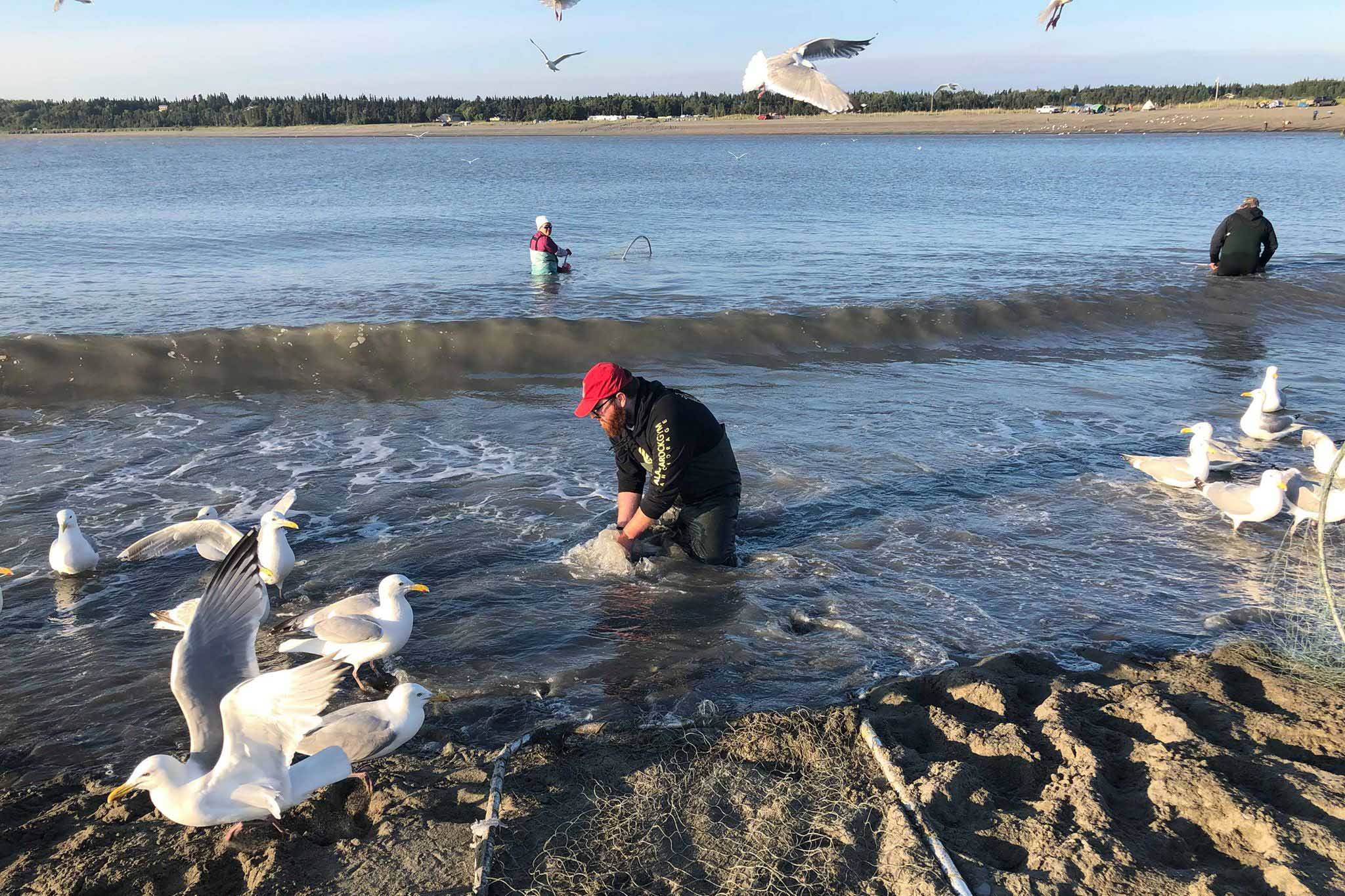The net needed to be assembled. The two pieces, one very long rod, connected to a shorter rod with a large square net, is awkward to carry. I throw it over my shoulder and stumble down to the mouth of the Kasilof River.
It’s almost 9 p.m. I have work in the morning. But, at the beach, children are building sand castles on the shore, a family gathered by their tent is cooking dinner, someone is blasting country music and dozens of people have their nets in the water.
I feel like I don’t belong. Everyone has special gear: beautiful, wood-carved fish bonkers, chest waders that fit perfectly and state of the art nets.
I struggle to walk in the hippers I’m wearing that are three sizes too big for me in the shoe, but are too tight to pass my upper thighs. None of the waders at the store fit me because shorter women with large hips don’t exist in the fishing world, apparently. My net is old and from a garage sale.
My boyfriend’s been dip netting many times. We both grew up in Anchorage, and his family came to the Kenai Peninsula to fill their freezers with salmon. I came to the peninsula growing up to visit family, who owned a seafood processing plant. We went halibut fishing sometimes, or helped at a family set-net site.
But, according to my dad, I’ve technically been dip netting once, but in a boat. And does that even count? My family’s since sold their seafood business and as an adult living in a different city, I no longer have the luxury of swiping smoked salmon from my parent’s fridge. I have to fend for myself.
So here I am, up to my knees in the mouth of the silty, swirly Kasilof River, holding a cumbersome net, trying to pretend like I know what I’m doing.
It doesn’t help that a fish swam into my boyfriend’s net seconds after he stepped into the water.
I stood in the water people-watching. A huge, black trash bag floated down the middle of the river. Did someone really throw their trash into the river? I thought about the relationship Alaskans have to the harvest, and the relationship locals have to the dip netters.
There’s a sense of unease when the dip net starts. Locals don’t have the same access to their beaches anymore and, sometimes, outsiders who descend on the Kenai can be filthy guests, leaving fish waste and other remnants of their experiences in our quiet and peaceful spaces.
I live just a five-minute drive from the south Kenai beach. Up until now, it’s been a peaceful place for me to drive to and enjoy the sounds and sights of the inlet. My boyfriend and I will drive there to watch the sunset, fly a kite or take our dog for a walk. It’s a completely different place in July, with the hustle and bustle of a small tent city, where everyone has the same goal. Fill the freezer.
After about 20 minutes, I felt the “bop” I was told I would feel when a fish hit the net. I screamed. Something finally happened. I dragged the net against the sandy floor of the river, against the tugging and pulling of the sockeye. He flopped around while I untangled him from the net and the sand coated his slimy, scaly skin.
Two salmon filled our bellies for most of the week. We’ll have to get out to the river a lot more, if we want to fill the freezer.


